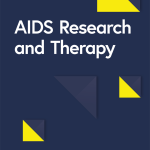A total of 29 ears (11 ears of 9 patients in the TEES group and 18 ears of 17 patients in the MES group) were enrolled in this study (Table 1). The median age of the TEES group was 18 (range, 6–65) years, whereas that of the MES group was 32.5 (range, 8–66) years. Regarding congenital ossicular chain discontinuity, the mean and median ages at surgery were 25.3 and 16 (range, 6–65) years in the TEES group, and 20.3 and 11.5 (range, 8–66) years in the MES group. The TEES group comprised four ears of four male patients and seven ears of five female patients. The MES group comprised 12 ears of 12 male patients and 6 ears of 5 female patients. The age and sex did not differ significantly between the groups (p = 0.38 and p = 0.14, respectively). Ten ears with congenital ossicular chain discontinuity and one with traumatic ossicular chain dislocation were treated with TEES. Six ears with congenital ossicular chain discontinuity and 12 with traumatic ossicular chain dislocation were treated with MES. The TEES group had a significantly higher proportion of ears with congenital ossicular chain discontinuities than the MES group (p = 0.0057). All congenital malformations were classified as class III according to the classification proposed by Teunissen and Cremers [2]. None of the patients had surgical findings that excluded them from ossiculoplasty.
Table 1 shows the preoperative hearing of the patients. The preoperative mean AC thresholds of the TEES and MES groups were 54.9 ± 21.6 dB HL and 54.5 ± 16.6 dB HL, respectively. The preoperative mean BC thresholds of the TEES and MES groups were 18.8 ± 16.9 dB HL and 20.0 ± 15.5 dB HL, respectively. The preoperative mean ABGs of the TEES and MES groups were 36.2 ± 13.8 dB HL and 34.5 ± 14.6 dB HL, respectively. The preoperative AC threshold, BC threshold, and ABG did not differ significantly (p = 0.96, p = 0.62, and p = 0.72, respectively) between the TEES and MES groups.
Table 2 shows a comparison of ossiculoplasty types, postoperative hearing results, operative times, and postoperative hospital stays of the TEES and MES groups. All cases of middle ear malformation had only ossicular chain discontinuity findings, and none were complicated by attic fixation. Ossicular chain repair was categorized based on the IOOG SAMEO-ATO scheme [13]. No significant differences in the ossiculoplasty types (p = 0.32) were observed (TEES group: Ost, 7 ears; Osi, 1; Oft, 2; and Ofm, 1; MES group: Ost, 15 ears; Osi, 1; Oft, 0; and Ofm, 2).
The median time to postoperative audiometry was 13 (range, 5–20) months. The postoperative mean AC thresholds of the TEES and MES groups were 28.5 ± 22.5 dB HL and 30.3 ± 14.3 dB HL, respectively. The postoperative mean BC thresholds of the TEES and MES groups were 15.4 ± 15.5 dB HL and 18.2 ± 15.6 dB HL, respectively. The postoperative mean ABGs of the TEES and MES groups were 13.1 ± 10.6 dB HL and 12.2 ± 6.8 dB HL, respectively. Figure 1 shows the postoperative ABG closure according to the AAO-HNS guidelines. A postoperative ABG of ≤ 20 dB was observed in 9 (81.8%) ears in the TEES group and 17 (94.4%) in the MES group. In the TEES group, a postoperative ABG of ≤ 20 dB was achieved in eight (80.0%) ears for congenital ossicular chain discontinuity and in one (100%) ear for traumatic ossicular chain dislocation. Whereas in the MES group, postoperative ABG ≤ 20 dB was achieved in five (83.3%) ears for congenital ossicular chain discontinuity and in 12 (100%) ears for traumatic ossicular chain dislocation. Thus, in both groups, the rates of achieving postoperative ABG ≤ 20 dB were comparable for congenital ossicular chain discontinuity and traumatic ossicular chain dislocation, respectively. No significant differences in the postoperative AC thresholds, BC thresholds, ABGs, or incidence of ABG ≤ 20 dB (p = 0.27, p = 0.54, p = 0.82, and p = 0.31, respectively) were observed between the groups. Figure 2 compares the preoperative and postoperative AC thresholds, BC thresholds, and ABGs of the TEES and MES groups. In the TEES group, the AC threshold, BC threshold, and ABG significantly improved postoperatively (p < 0.01, p = 0.038, and p < 0.01, respectively). In the MES group, the AC threshold and ABG significantly improved postoperatively (p < 0.001 and p < 0.001, respectively).
Comparisons of the preoperative hearing results and hearing results after TEES and MES. In the TEES group, the postoperative air-conduction (AC) threshold (a), bone-conduction threshold (b), and air–bone gap (ABG) (c) showed significant improvement compared with the preoperative values. In the MES group, the postoperative AC threshold (a) and ABG (c) showed significant improvement compared with the preoperative values. Differences were analyzed using the Wilcoxon signed-rank test. MES, microscopic ear surgery; TEES, transcanal endoscopic ear surgery
Figure 3 shows a comparison of preoperative and postoperative ABGs according to the diagnosis. The preoperative and postoperative mean ABGs were 37.0 ± 12.7 dB HL and 13.8 ± 9.4 dB HL, respectively, for congenital ossicular chain discontinuity and 32.8 ± 15.8 dB and 11.0 ± 6.7 dB HL, respectively, for traumatic ossicular chain dislocation. The preoperative and postoperative ABGs did not differ significantly between congenital ossicular chain discontinuity and traumatic ossicular chain dislocation (p = 0.35 and p = 0.71, respectively). The postoperative ABGs associated with congenital ossicular chain discontinuity and traumatic ossicular chain dislocation were significantly improved compared with the preoperative ABGs (p < 0.001 and p < 0.01, respectively).
Pre- and postoperative ABGs associated with congenital ossicular chain discontinuity and traumatic ossicular chain dislocation. The congenital ossicular chain discontinuity and traumatic ossicular chain dislocation groups did not differ in terms of the preoperative and postoperative ABGs. The ABGs associated with congenital ossicular chain discontinuity and traumatic ossicular chain dislocation improved significantly with the procedure. ABG, air–bone gap
The operative times of the TEES group (median, 80 min; range, 38–120 min) and MES group (median, 85.5 min; range, 63–137 min) were not significantly different (p = 0.31). The intraoperative and postoperative complications included chorda tympani severance in one ear in the MES group. No cases of postoperative BC threshold deterioration > 10 dB in either group were observed. No cases of postoperative facial nerve paralysis, sensorineural hearing loss, or vertigo were observed. The postoperative hospital stay of the TEES group (median, 2 days; range, 1–7 days) was significantly shorter than that of the MES group (median, 7.5 days; range, 2–10 days) (p = 0.0003).








Add Comment